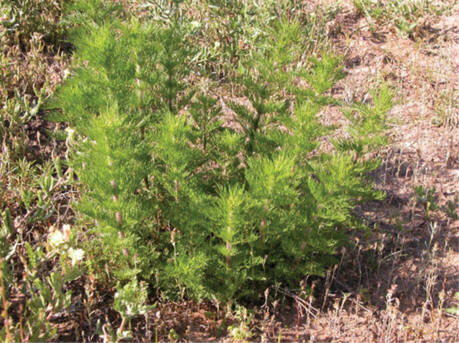- Return to Article Of The Month index
Why Do Pasture Herbicides Fail?
July , 2021
Laura Bennett, UF/IFAS Extension Pasco, Sumter and Hernando Counties
There is nothing more frustrating than to herbicide
your pasture and have nothing to show for it.
The question posed in this title is done so in a rather
“tongue-in-cheek” manner. The
herbicides, themselves, are highly researched and highly effective.
However, there are several factors that determine
our success using herbicides on
pasture. We often think of
weather conditions (like the chance of rain or wind conditions) when
thinking about factors that affect herbicide success.
While those are very important, there are several other aspects that
need to be equally considered.
Herbicide failure often is due to our own error in application.
First, we must properly identify the weed(s) we are
trying to control. Improper
identification can very well lead to the incorrect herbicide selection.
While most herbicides will control a variety of weeds, some will
flat-out not have any effect on certain weeds.
That is an expensive mistake.
If you are unsure what pasture weed you are dealing with, you can
send pictures to your county’s agricultural agent.
They have many resources to help get your weed identified.

Second, the “health status” of the weed itself needs
to be ideal for proper uptake of the herbicide and for our success in
killing it. In general, weeds
should be immature/tender and not stressed.
In theory, the first few months of the year should be ideal for weed
control since weeds are the most immature.
However, one of the most common stressors of plants is drought.
Our Spring in Florida is historically a drought period.
Lack of rain causes plants to become dormant, slowing translocation
through the plant. This is the
process that carries the herbicide throughout the plant.
Additionally, dormancy due to cold weather can create a similar
response in the plant, as well.
Next, use quality water and a surfactant.
When mixing your herbicide, your water quality can be an enemy of
your herbicide. Municipal water
tends to be alkaline and can quickly render herbicide ineffective.
Hardness in well water can also be an issue.
Using the tank of herbicide mixture quickly (use within the day it is
mixed) is a best management practice.
Surfactants enhance the ability of herbicide to enter the plant by
breaking the surface tension of the droplets when sprayed on the plants.
The spray mixture then covers more openings on the leaf surface which
enhances absorption by the plant.
This is an inexpensive addition to your spray mix; read the herbicide
label to select the correct surfactant.
Additionally, do not mix different herbicides together without
checking for compatibility.
Depending on the herbicide’s mode of action in the plant, you can sometimes
get less control with two herbicides than you would with the one alone.
Sprayer calibration is a necessary step for herbicide success.
When herbicide application rates are given, it is usually listed as
“number of pints per acre”.
Having too much herbicide applied can be as detrimental as having too little
herbicide applied. More is not
better because it is expensive and can cause damage to non-targeted plants,
including your pasture grass.
There are instructions available (even for backpack applications) to help
guide you in the calibration process.
Sprayer Calibration
(https://edis.ifas.ufl.edu/publication/wg217)
Finally, reading the herbicide label is imperative.
The research that has been done by the herbicide companies is put on
that label to ensure your success.
An excellent resource to have on hand is
Weed Management in
Pastures and Rangeland
(https://edis.ifas.ufl.edu/publication/wg006).
This provides a list of common weeds in Florida and compares the
success rates of many pasture herbicides available to us.
There still may be times when herbicide application does not work as well as expected. While we cannot always create an ideal situation for herbicide application with all variables perfect, we must do our best to control as many factors as we can. It is a best management practice that is both good for our budget and the environment.

